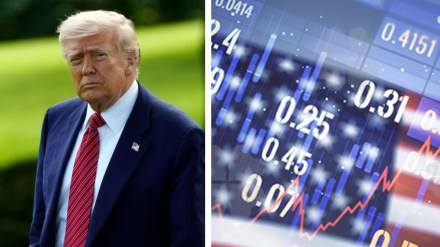The core PCE Price Index—which excludes the more volatile categories of food and energy—rose 2.5% year-over-year, easing from a 2.7% increase in March and matching analyst forecasts. Both the headline and core PCE indices saw modest monthly gains of 0.1%.
In addition to the inflation data, the report showed that personal income rose 0.8% in April, while personal spending increased by 0.2% on a monthly basis, suggesting continued, albeit cautious, consumer activity.
The PCE Price Index is the Federal Reserve’s preferred inflation gauge, and the latest figures may bolster expectations that the central bank could move closer to cutting interest rates later this year—provided the disinflation trend continues.
The data carries weight on Wall Street and in Washington, as the PCE index is a key input in the Fed’s decision-making process. During his post-meeting press conference in early May, Federal Reserve Chair Jerome Powell acknowledged that inflation remains above the central bank’s 2% target. He warned of persistent upward pressure and emphasized that the Fed would proceed cautiously amid “a great deal of uncertainty about tariffs,” saying the prudent course of action was to wait for more clarity before adjusting policy.
Ahead of the latest report, TD Securities predicted that April would bring subdued inflation figures, forecasting a 0.1% monthly increase in core PCE after a flat reading in March, and a modest 0.06% rise in headline PCE. They also anticipated a pullback in consumer spending following a sharp 0.7% jump in March, describing the previous month’s surge as “front-loading.”
Federal Reserve officials echoed a tone of cautious vigilance this week. New York Fed President John Williams emphasized the importance of preventing inflation from becoming entrenched, warning that persistent inflation risks becoming permanent. Similarly, Minneapolis Fed President Neel Kashkari signaled support for holding interest rates steady until there is greater clarity on how elevated tariffs are impacting prices.
While April’s inflation data may ease some concerns, Fed policymakers appear in no rush to change course, maintaining a wait-and-see approach as they balance inflation risks against uncertain economic headwinds.
